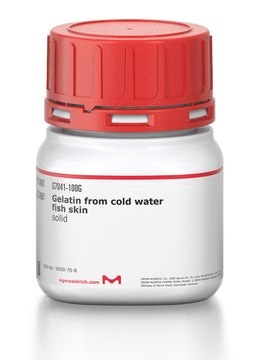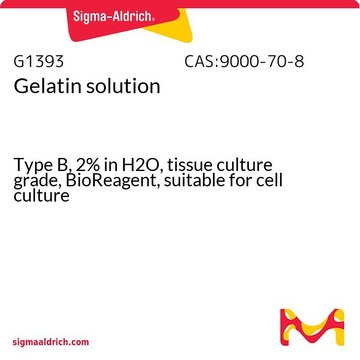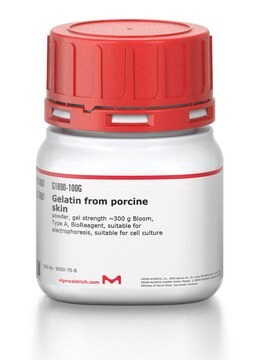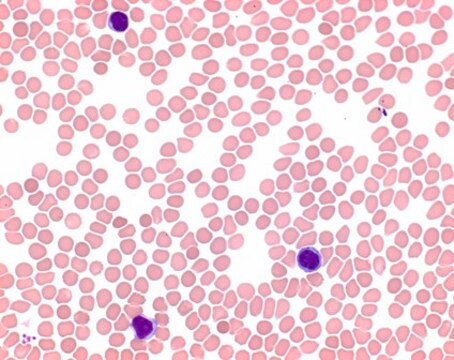935425
Gelatin from cold water fish skin
low endotoxin
Anmeldenzur Ansicht organisationsspezifischer und vertraglich vereinbarter Preise
Alle Fotos(1)
About This Item
UNSPSC-Code:
51241857
NACRES:
NA.21
Empfohlene Produkte
Qualitätsniveau
Form
powder (chunks or fibers)
Verunreinigungen
<10 CFU/g Bioburden (fungal)
<10 CFU/g Bioburden (total aerobic)
125 EU/g Endotoxin
Farbe
white to pale yellow
Lagertemp.
2-8°C
Allgemeine Beschreibung
Gelatin is widely used for tissue engineering and 3D Bioprinting applications. Gelatin is derived from natural extracellular matrix (ECM) components. Due to its low cost, abundance, and retention of natural cell binding motifs, gelatin has become a highly sought material for tissue engineering applications. While gelatin from porcine skin is known for its thermoreversible gelling properties, Gelatin from cold water fish skin has low gelling and melting points. This gelatin will not gel at 10°C, hence they do not have bloom strength. This unique gelatin property makes this an attractive biomaterial which are hindered by the higher thermogelation property of porcine skin such as vat-polymerization based bioprinting and microfluidics.
Anwendung
- Hydrogels
- Tissue engineering
- Bioprinting
- Drug delivery system
Leistungsmerkmale und Vorteile
- Naturally derived polymer
- Low gelling and melting points
- Thermoreversible gelling properties
- Low endotoxin and low bioburden
Ähnliches Produkt
Produkt-Nr.
Beschreibung
Preisangaben
Lagerklassenschlüssel
11 - Combustible Solids
WGK
nwg
Flammpunkt (°F)
Not applicable
Flammpunkt (°C)
Not applicable
Hier finden Sie alle aktuellen Versionen:
Analysenzertifikate (COA)
Lot/Batch Number
Leider sind derzeit keine COAs für dieses Produkt online verfügbar.
Wenn Sie Hilfe benötigen, wenden Sie sich bitte an Kundensupport
Besitzen Sie dieses Produkt bereits?
In der Dokumentenbibliothek finden Sie die Dokumentation zu den Produkten, die Sie kürzlich erworben haben.
Svetlana R Derkach et al.
Polymers, 12(12) (2020-12-24)
This review considers the main properties of fish gelatin that determine its use in food technologies. A comparative analysis of the amino acid composition of gelatin from cold-water and warm-water fish species, in comparison with gelatin from mammals, which is
Hee Jeong Yoon et al.
PloS one, 11(10), e0163902-e0163902 (2016-10-11)
Gelatin methacryloyl (GelMA) is a versatile biomaterial that has been used in various biomedical fields. Thus far, however, GelMA is mostly obtained from mammalian sources, which are associated with a risk of transmission of diseases, such as mad cow disease
Unser Team von Wissenschaftlern verfügt über Erfahrung in allen Forschungsbereichen einschließlich Life Science, Materialwissenschaften, chemischer Synthese, Chromatographie, Analytik und vielen mehr..
Setzen Sie sich mit dem technischen Dienst in Verbindung.








